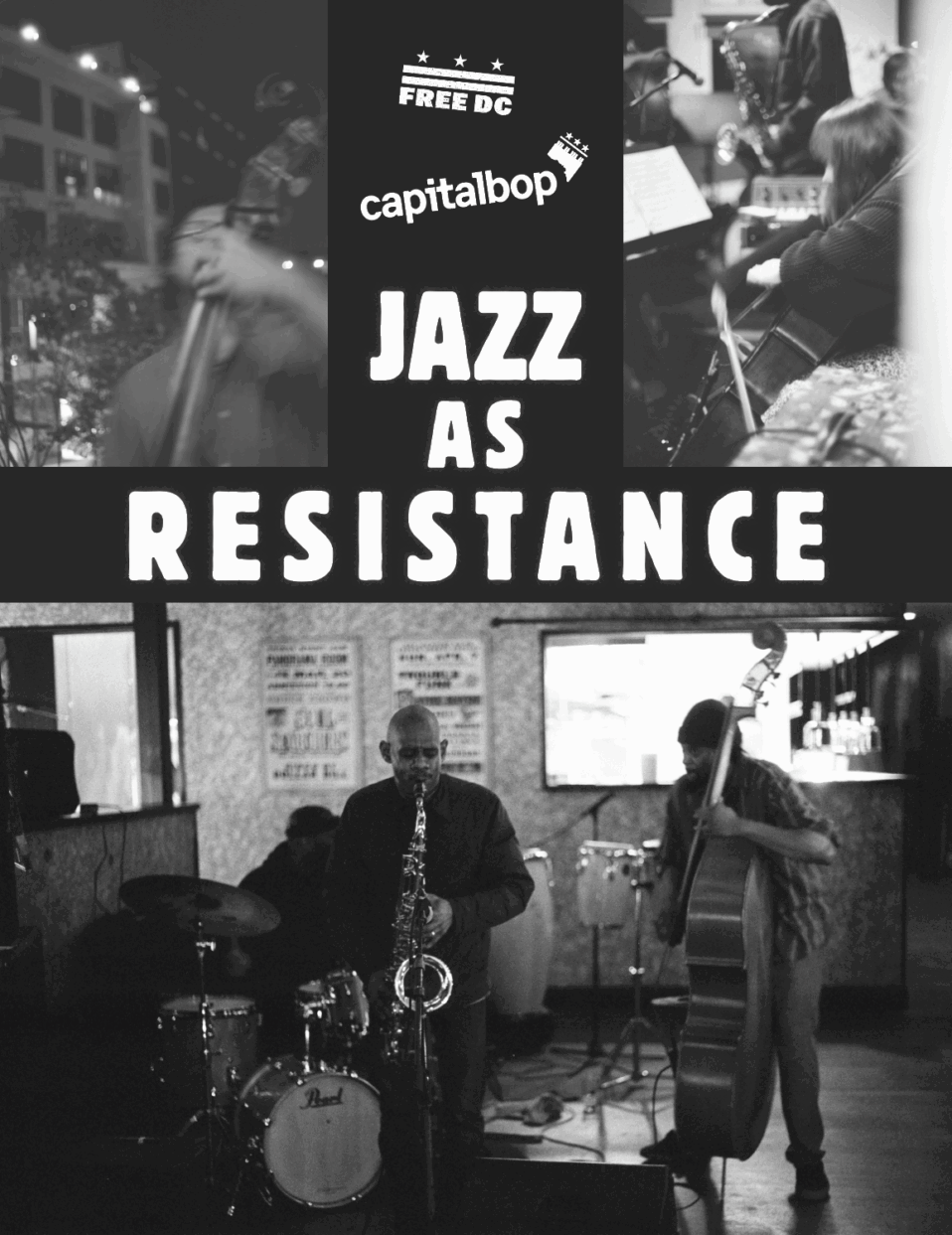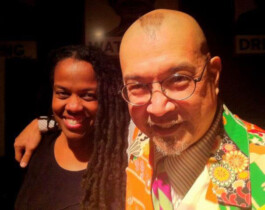Jazz as Resistance
a zine produced by CapitalBop in solidarity with Free DC
Editor’s note
Why do we still find ourselves saying the word “jazz” — and what do we mean by “resistance”? Jazz was a fraught term from its very beginning, partly because those beginnings were placed in the record by writers who were themselves new to the encounter with Black genius. At the same time, from that same beginning, what they were failing to capture on paper was itself an energy, a life-force, a “changing same,” to reference Amiri Baraka, the poet, organizer, jazz artist, DIY zine editor, Black Arts movement royalty, and father of political royalty in Newark Mayor Ras Baraka. So, even as jazz is itself a sound of resisting, of brilliance insisting on release — from any body whose very survival represents an act of transcendence, yet whose inheritance of beauty predates by far the Western encounter — at least some of that resistance must be against jazz itself.
The casual extravagance of Duke Ellington’s orchestra, which first sprang from the streets of D.C. in the 1910s and ’20s; Gil Scott-Heron choosing Washington as the home base for his musical and poetic project in the ’70s and ’80s; Christie Dashiell’s album just this year with Terri Lyne Carrington updating the Freedom Now Suite, whose original scores lie in the Max Roach archives at the Library of Congress here: The tradition of Great Black Music — of music that resists its own enclosure, and shows us a more liberated path that we all might walk — has been carried strongly in Washington, D.C., for over 100 years, intersecting often with movements for liberation.
It is the tradition that, for the last 15, has fortified CapitalBop’s efforts to document and celebrate the D.C. jazz (or “Black American Music,” or “creative music”) scene and to present the music in living form at loft spaces, public parks, rooms that have yet to become boutiques and hotels, or anywhere else we might find it.
At a moment when it’s never been more important to re-member D.C.’s history of fighting for autonomy, CapitalBop is honored to collaborate with the heroic coalition that is Free DC. Inspired by their direct action and resistance work, not to mention their consciousness of history, a group of CapitalBop workers — associate editor Abram Mamet, contributing editor Joshua Myers, designer and web coordinator Lyla Maisto, staff photographer Keith Butler, and managing director Alex Hamburger — is proud to present this zine to the community in solidarity with Free DC.
The contributors to this zine are an inspiring group: author, organizer and curator Natalie Hopkinson; poet and literary activist E. Ethelbert Miller; drummer and sound healer Kweku Sumbry; writer and WPFW host Esther Iverem; author Briana Thomas; and Howard University professor (and CB editor) Joshua Myers. We are grateful to each of them for their thoughtful and energizing participation in this project.
The printed version of this zine (which includes most but not all of the above-mentioned contributions) is finding its way into hands across the city at Free DC events, at other public actions and events, and in shops and jazz clubs around the city. Seek it out, spread the word, let us know if you’re interested in receiving a batch of printed zines to fold and distribute in your community.
Digitally, the contents of this zine will roll out over the coming weeks. Check back to make sure you don’t miss Esther Iverem’s piece on an unforgettable moment in 1992 when jazz and resistance came together (Nov. 13); Joshua Myers on the legacy of jazz poet and scholar Sterling Brown (Nov. 19); Briana Thomas on Black women and D.C. music (Dec. 11); and Ethelbert Miller on his relationship to jazz (Dec. 18). The easiest way to make sure you don’t miss a beat is by subscribing to CapitalBop’s newsletter (scroll to the bottom of this page) and following us on Instagram.
–GIOVANNI RUSSONELLO
Co-founder, CapitalBop






